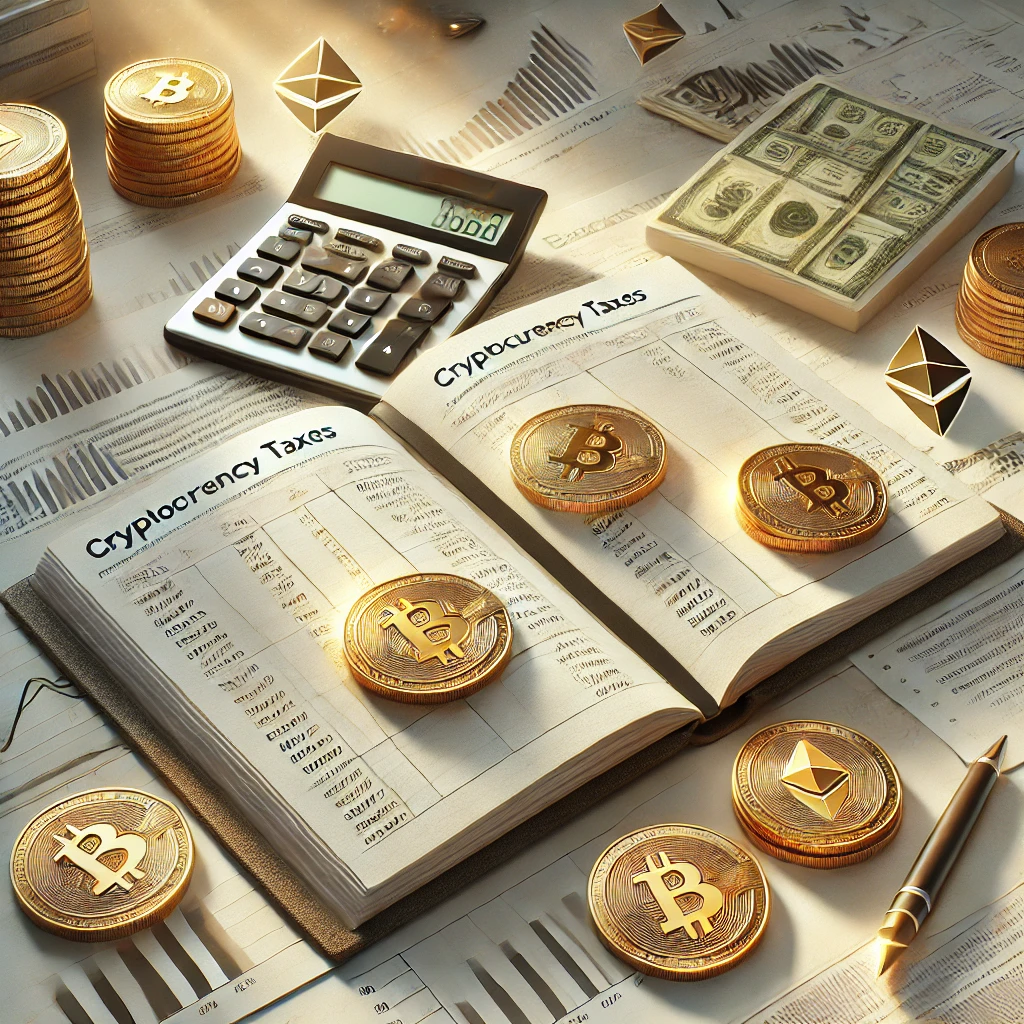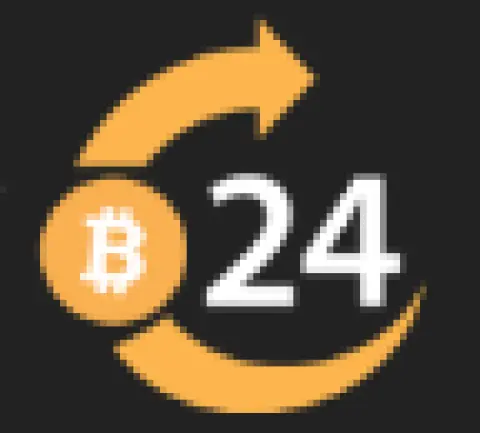Table of Contents:
Understanding USDT Compatibility Across Leading Crypto Wallets
Grasping the ins and outs of USDT compatibility isn’t just a technical checkbox—it’s the difference between seamless stablecoin management and a headache-inducing experience. Not every crypto wallet treats USDT the same way. The landscape is shaped by two main factors: the supported blockchains and the wallet’s ability to handle USDT’s unique multi-chain presence.
First, let’s get specific: USDT is issued on a range of blockchains, including Ethereum (ERC-20), Tron (TRC-20), Solana, Polygon, and a handful of others. Leading wallets—think MetaMask, Trust Wallet, Ledger Live, and Exodus—don’t just support USDT as a token; they offer nuanced, chain-specific compatibility. For example, MetaMask natively supports USDT on Ethereum and Polygon, but not on Tron. Trust Wallet, on the other hand, covers a broader array, letting you hold and move USDT across several chains from a single interface.
What does this mean for you? If you’re planning to send USDT to an exchange or another user, you need to know which chain your wallet supports—and whether it matches the recipient’s. Mismatched chains can lead to lost funds or frustrating delays. Top wallets make this clear by displaying the network alongside your USDT balance and providing chain-specific deposit addresses.
Another layer of compatibility comes with swap and bridge features. Some wallets allow you to swap USDT between chains or other tokens directly inside the app, using integrated bridges or decentralized exchanges. This isn’t universal, though—so if cross-chain flexibility is a must, double-check before you commit to a wallet.
Finally, leading wallets regularly update their USDT support as new chains emerge or as the stablecoin’s standards evolve. It’s worth checking release notes or support pages for the latest details, especially if you’re managing significant amounts or using advanced features like DeFi integrations.
Key Features Essential for USDT Wallet Users
When it comes to choosing a wallet for USDT, certain features can make or break your daily experience. Stablecoin holders, especially those who move funds frequently or rely on USDT for DeFi, need tools that go beyond the basics. Here’s what really matters:
- Multi-Asset Management: A wallet that allows you to manage USDT alongside other major cryptocurrencies, tokens, and even NFTs, so you’re not juggling multiple apps.
- Instant Transaction Notifications: Real-time alerts for incoming and outgoing USDT transactions help you track your funds without constantly checking your wallet.
- Integrated Swap Functionality: The ability to swap USDT for other assets directly within the wallet—without leaving the app or relying on external exchanges—saves time and reduces risk.
- Customizable Network Fees: For those who value control, the option to adjust gas or transaction fees can be a game-changer, especially during periods of network congestion.
- QR Code Support: Sending and receiving USDT via QR codes streamlines payments and minimizes errors, particularly for in-person or business transactions.
- Regular Security Reminders: Built-in prompts or tips that remind users to back up their recovery phrase and avoid phishing attempts add a practical layer of protection.
- Multi-Platform Sync: The convenience of accessing your USDT wallet from mobile, desktop, and browser extension—always with up-to-date balances and transaction history.
- Seamless Backup and Restore: Effortless backup options, such as encrypted cloud storage or simple export/import processes, are essential for peace of mind.
These features, when combined, create a wallet experience that’s not just functional but actually enjoyable for USDT holders. Missing even one can lead to friction or unnecessary risk—so it’s worth seeking out a wallet that ticks every box.
Top USDT-Compatible Wallets: Examples and Practical Comparisons
Finding the right USDT-compatible wallet isn’t just about ticking a box—it’s about matching your habits, security needs, and the networks you use. Here’s a practical look at some of the most trusted wallets, highlighting what sets each apart for stablecoin holders.
-
Trust Wallet
Why it stands out: Trust Wallet is a mobile-first solution with support for USDT on multiple chains, including Ethereum, Tron, and Binance Smart Chain. Its in-app purchase and swap features make it ideal for users who want quick access to stablecoins without extra steps. The simple interface appeals to beginners, while advanced users appreciate the built-in DApp browser. -
Ledger (with Ledger Live)
Why it stands out: Ledger hardware wallets, combined with the Ledger Live app, provide top-tier security for USDT. The device stores private keys offline, which is crucial for those holding large stablecoin balances. Ledger Live supports USDT on Ethereum and Tron, and its integration with third-party apps expands its DeFi capabilities. -
Exodus
Why it stands out: Exodus offers a visually appealing desktop and mobile wallet, supporting USDT on Ethereum and Tron. Its user-friendly portfolio view and integrated exchange make managing and swapping USDT intuitive. Exodus also provides 24/7 support, which is a lifesaver if you ever hit a snag. -
SafePal
Why it stands out: SafePal bridges the gap between mobile convenience and hardware-level security. Supporting USDT on a wide range of blockchains, it’s suitable for users who want both hot and cold storage options. The wallet’s built-in DApp access is a plus for DeFi enthusiasts. -
Coinomi
Why it stands out: Coinomi is a multi-chain wallet that supports USDT on several networks. Its focus on privacy—no KYC required—and strong track record for security make it a favorite among users who value anonymity and flexibility.
Each of these wallets brings something unique to the table. If security is your top concern, hardware options like Ledger are hard to beat. For all-in-one convenience and easy swaps, Trust Wallet or Exodus shine. Meanwhile, SafePal and Coinomi cater to users who want more control over privacy or multi-chain management. The best choice? It’s the one that fits your specific USDT usage and comfort level—no one-size-fits-all here.
Network Support: Blockchain Choices for USDT Storage and Transfers
USDT’s flexibility across multiple blockchains gives stablecoin holders a real edge, but it also demands some careful choices. Not all blockchains are created equal when it comes to storing and transferring USDT—each network brings its own quirks, fees, and speeds.
- Ethereum (ERC-20): Widely supported and deeply integrated into DeFi, but network congestion can make fees unpredictable. If you’re planning large transfers or interacting with advanced protocols, Ethereum’s security and ecosystem are hard to beat.
- Tron (TRC-20): Popular for its low transaction fees and fast confirmation times. For users sending USDT frequently or in smaller amounts, Tron is a practical, cost-effective choice—especially for cross-border payments or remittances.
- Binance Smart Chain (BEP-20): Offers a good balance between speed and affordability. Many wallets and exchanges now support USDT on BSC, making it a go-to for users active in the Binance ecosystem or DeFi projects outside Ethereum.
- Solana: Lightning-fast and with minimal fees, Solana is gaining traction for USDT transfers. However, not every wallet or exchange supports USDT on Solana yet, so double-check compatibility before moving funds.
- Polygon (MATIC): Combines Ethereum compatibility with lower fees and quick settlements. If you want to avoid Ethereum’s high gas costs but still access DeFi, Polygon is a strong alternative—just be sure your wallet can handle USDT on this chain.
Choosing the right network for your USDT depends on your priorities: speed, cost, ecosystem access, or security. Sometimes, the “best” option is simply the one your recipient can use without hassle. It pays to stay nimble and check for new network support, as the stablecoin landscape keeps evolving.
Security in USDT Wallets: Private Keys, Wallet Integration, and User Safety
Security in USDT wallets isn’t just about locking things down—it’s about making sure you, and only you, have true control over your funds. Let’s get into the details that actually matter for stablecoin holders.
- Private Key Handling: Top wallets never transmit your private keys over the internet. They generate and store these keys locally, often using secure device storage or encrypted environments. Some wallets even let you split or shard your recovery phrase for extra peace of mind—so even if someone finds part of it, they’re out of luck.
- Advanced Wallet Integration: For users seeking an extra layer of safety, certain wallets allow integration with biometric authentication (like fingerprint or face ID) and hardware security modules. This means that even if your phone or computer is compromised, unauthorized access to your USDT remains a tall order.
- Transaction Approval Safeguards: Modern wallets increasingly require explicit user confirmation for every outgoing USDT transaction. Some go further, offering transaction whitelists or time-locked withdrawals—features that can trip up even the craftiest scammer.
- Phishing and Malware Protection: A handful of wallets now incorporate anti-phishing codes or customizable warnings. You’ll see visual cues or even personalized phrases before signing a transaction, making it much harder for a fake website or app to trick you.
- Open-Source Audits and Transparency: The most trustworthy wallets publish their code for public scrutiny and undergo third-party security audits. This transparency means vulnerabilities are caught and patched quickly, and you can see exactly how your USDT is being protected.
Staying safe with USDT isn’t about paranoia—it’s about using wallets that give you the tools and transparency to stay a step ahead of threats. In the end, a secure wallet is your first and last line of defense.
User Experience: Accessibility, Onboarding, and Support for USDT Holders
USDT wallet user experience hinges on more than just a pretty interface—it’s about making every step, from first install to ongoing support, as frictionless as possible. The best wallets go the extra mile for accessibility, onboarding, and help when things get tricky.
- Accessibility for All Devices: The top wallets deliver consistent functionality whether you’re on a smartphone, tablet, or desktop. Features like font scaling, high-contrast modes, and voice-over compatibility aren’t just nice-to-haves—they make USDT management possible for users with diverse needs.
- Streamlined Onboarding: Clear, jargon-free guidance during setup is a game changer. Step-by-step walkthroughs, interactive tooltips, and even video explainers help new users avoid rookie mistakes. Some wallets offer “test mode” or simulated transactions, so you can practice without risking real funds.
- Responsive Support Channels: It’s not just about having a help desk. Live chat, multilingual email support, and active community forums ensure USDT holders get answers fast—day or night. Top wallets also update their FAQs and troubleshooting guides based on real user feedback, not just canned responses.
- Continuous Education: Regularly updated knowledge bases, newsletters, and in-app notifications keep users informed about new features, network changes, or potential risks. This proactive approach helps users stay ahead, not just react to problems.
Ultimately, a wallet that invests in accessibility, smooth onboarding, and responsive support transforms USDT from just another token into a truly user-friendly financial tool.
Web3 and DeFi Access with USDT-Compatible Wallets
USDT-compatible wallets have become a gateway to the expanding universe of Web3 and decentralized finance (DeFi). For stablecoin holders, these wallets aren’t just for storage—they unlock direct participation in protocols and services that traditional finance can’t touch.
- Direct DApp Connectivity: Many wallets now offer built-in Web3 browsers or one-click DApp connections. This means you can supply USDT as liquidity, stake it in yield farms, or lend it on decentralized money markets—all without leaving your wallet’s ecosystem.
- Token Approval Management: Enhanced dashboards let you review and revoke USDT permissions granted to DeFi protocols. This gives you granular control over which smart contracts can access your funds, reducing the risk of unauthorized spending.
- Real-Time DeFi Analytics: Some wallets integrate analytics tools that display your USDT balances across multiple protocols, track APYs, and monitor pending rewards. This level of insight helps you optimize returns and spot new opportunities quickly.
- Cross-Chain DeFi Access: Advanced wallets support bridging USDT between blockchains, letting you tap into DeFi ecosystems on Ethereum, Polygon, BNB Chain, and more. This flexibility means you’re not locked into a single network’s limitations or fees.
- Seamless NFT and Airdrop Participation: USDT-compatible wallets often support NFT marketplaces and automated airdrop claims, making it easy to diversify your portfolio or participate in new Web3 projects as they launch.
By integrating these Web3 and DeFi features, USDT wallets empower users to move beyond passive holding and actively shape their financial future in the decentralized world.
Practical Tips for Safe and Effective USDT Storage
Storing USDT safely and efficiently requires more than just picking a wallet and hoping for the best. Here are actionable, sometimes overlooked strategies that can make a real difference for stablecoin holders:
- Test Transfers First: Before sending large amounts of USDT, always perform a small test transaction. This simple habit can save you from costly mistakes, especially when using new wallets or unfamiliar networks.
- Label Wallet Addresses: Use wallet features or external tools to label your addresses. Clear naming conventions help you avoid confusion and accidental transfers, particularly if you manage multiple accounts or chains.
- Set Up Multi-Signature Approvals: If your wallet supports it, enable multi-signature requirements for outgoing USDT transactions. This adds a powerful layer of protection, especially for business or shared accounts.
- Monitor Blockchain Explorers: Regularly check your USDT wallet activity using official blockchain explorers. This independent verification can catch unauthorized transactions faster than waiting for wallet notifications.
- Update Recovery Methods: Review and update your recovery phrase storage periodically. Consider using a fireproof and waterproof backup or a secure offline method, rather than relying solely on digital copies.
- Separate Long-Term and Active Funds: Keep your long-term USDT holdings in a separate, less-accessible wallet. Use a more convenient wallet only for daily transactions—this limits exposure if your device is lost or compromised.
- Stay Informed About Wallet Updates: Subscribe to your wallet provider’s official channels for update alerts. New releases often include critical security enhancements or compatibility fixes that directly impact your USDT safety.
By weaving these practical steps into your routine, you dramatically reduce risks and keep your USDT holdings ready for whatever the crypto world throws your way.
Frequently Asked Questions About USDT-Compatible Wallets
Frequently Asked Questions About USDT-Compatible Wallets
-
Can I use a single wallet to manage USDT across different blockchains?
Yes, but only if the wallet explicitly supports multi-chain USDT management. Some wallets let you view and transfer USDT on various networks from one interface, while others require separate accounts or apps for each blockchain. -
What happens if I send USDT to the wrong blockchain address?
Funds sent to an incompatible address or network are usually unrecoverable. Always double-check both the network and the address format before confirming any transfer, especially when dealing with exchanges or new wallets. -
Are there wallets that allow automatic conversion of USDT to other stablecoins?
Some advanced wallets and DeFi-integrated apps offer built-in swap features, letting you convert USDT to other stablecoins or tokens instantly. However, not all wallets support this natively, so check the available features before relying on this function. -
How do I verify that a wallet is genuinely compatible with the latest USDT standards?
Check the wallet’s official documentation or support channels for explicit mentions of supported USDT versions and networks. Community feedback and recent update logs can also provide insight into ongoing compatibility and support. -
Is it possible to recover USDT if I lose access to my wallet?
Recovery is only possible if you have securely stored your recovery phrase or private key. Without these, regaining access to your USDT is virtually impossible, as wallets are designed to prevent unauthorized recovery for security reasons.
Summary: Optimal Stablecoin Management Through the Right USDT Wallet
Summary: Optimal Stablecoin Management Through the Right USDT Wallet
Choosing the right USDT wallet is more than a matter of convenience—it’s a strategic decision that can impact everything from transaction speed to long-term asset growth. Optimal management means leveraging features that empower you to adapt as the stablecoin landscape evolves.
- Scalability for Future Assets: The best wallets are designed to accommodate new stablecoins and token standards as they emerge, ensuring your setup remains relevant and flexible as the market shifts.
- Personalization of Financial Workflows: Advanced wallets allow you to customize transaction processes, notifications, and even user interface layouts, so your daily management aligns with your habits and priorities.
- Integration with Financial Planning Tools: Some wallets now offer direct connections to portfolio trackers, tax reporting software, or automated budgeting features, streamlining your entire financial ecosystem around USDT holdings.
- Proactive Risk Management: Top-tier wallets include real-time monitoring for suspicious activity and customizable alerts, enabling you to respond instantly to potential threats or market changes.
- Community-Driven Innovation: Wallets that actively solicit user feedback and integrate open-source contributions tend to deliver faster improvements and novel features, keeping you at the forefront of stablecoin management best practices.
In short, optimal USDT management isn’t static—it’s about equipping yourself with a wallet that evolves with your needs, adapts to new opportunities, and provides the tools to confidently navigate the ever-changing world of digital finance.
Experiences and Opinions
Many users find Trust Wallet effective for managing USDT. The wallet is user-friendly and secure. However, some report issues with transaction speeds, especially during peak times. This can lead to delays in sending and receiving funds.
Cropty is another popular option. Users appreciate its ability to handle multiple cryptocurrencies, including USDT. The interface is straightforward, making it easy to buy, sell, and exchange assets. Yet, some users mention that customer support can be slow to respond, which can be frustrating when immediate assistance is needed.
Simple Wallet is often praised for its easy navigation. Users report that managing USDT and other cryptocurrencies is seamless. The app also supports fiat currencies, which many find convenient. However, a few users express concerns about the app's security features. They urge the developers to enhance security protocols to protect user funds better.
In forums, discussions reveal that not all wallets support USDT across various blockchains. This limitation can complicate transactions for users who hold USDT on different networks. Many users prefer wallets that can seamlessly switch between TRC20 and ERC20. This flexibility is crucial for effective asset management.
Security continues to be a top concern. Users frequently discuss the importance of choosing wallets with strong encryption and two-factor authentication. They emphasize that any wallet chosen should prioritize user security to prevent hacks or theft.
Another common issue is fees. Users compare the transaction fees across different wallets. Some wallets have higher fees for USDT transactions, which can be a deterrent for regular traders. They recommend looking for wallets with competitive fees to maximize returns.
Overall, user experiences show a preference for wallets that combine ease of use with robust security features. Many users agree that a wallet should not only support multiple cryptocurrencies but also provide a smooth user experience. This balance is essential for both new and experienced cryptocurrency holders.
For those seeking more information, platforms like Google Play and App Store offer insights into user ratings and experiences. These insights can help users make informed choices when selecting a crypto wallet for managing USDT.
FAQ: Choosing the Right Crypto Wallet for USDT
What features are essential when selecting a USDT-compatible crypto wallet?
Key features include multi-chain USDT support, integrated swap and bridge functionalities, real-time notifications, secure private key storage, and the ability to manage multiple assets from a single interface. Mobile, desktop, and browser sync options further enhance flexibility.
Which crypto wallets offer the best multi-chain support for USDT?
Wallets such as Trust Wallet, Coinomi, and SafePal are known for their comprehensive multi-chain USDT support, covering Ethereum (ERC-20), Tron (TRC-20), Binance Smart Chain (BEP-20), Solana, and Polygon. This enables users to send, receive, and manage USDT on different blockchains seamlessly.
How do USDT wallets ensure user security and protect private keys?
USDT wallets store private keys locally, often in encrypted environments or on hardware devices. Many include biometric authentication, recovery phrases, and regular security reminders to help avoid phishing attacks and unauthorized access. Some even incorporate open-source audits for added transparency.
Can I use a single wallet to manage USDT on multiple blockchains?
Yes, several leading wallets allow users to manage USDT across multiple blockchains within the same app. However, it is crucial to ensure the wallet explicitly supports the desired networks before transferring funds to prevent compatibility issues or asset loss.
What practical steps should I take to safely store and transfer USDT?
Always verify network compatibility before transactions, keep your recovery phrase securely stored offline, perform test transfers for new wallets or networks, and consider using hardware wallets for significant balances. Regularly update your wallet application and monitor activity via blockchain explorers for enhanced safety.











